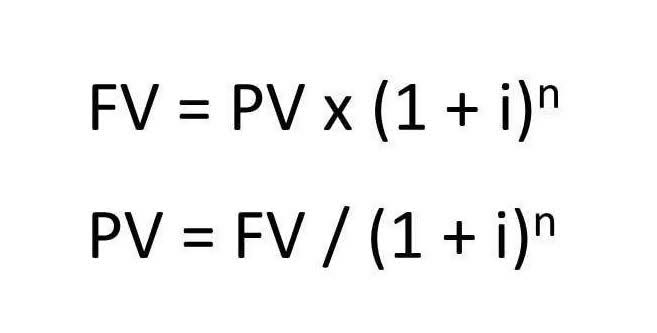
The Federal income tax also has a standard deduction, personal exemptions, and dependant deductions, though they are different amounts than California's and may have different rules. The Personal Exemption, which is supported by the California income tax, is an additional deduction you can take if you (and not someone else) are primarily responsible for your own living expenses. Likewise, you can take an additional dependent exemption for each qualifying dependent (like a child or family member), who you financially support. Remember that California may have very different deduction laws from the Federal Income Tax, so you may have to write a whole new list of deductions for your California income tax return.
Common California tax credits

Each marginal rate only applies to earnings within the applicable marginal tax bracket. If you’re a part-year resident, you pay California state tax on all income you received during the part of the tax year you were a resident of California, plus state income tax on income just from California sources while you were a nonresident. If your state tax witholdings are greater then the amount of income tax you owe the state of California, you will receive an income tax refund check from the government to make up the difference. The two most popular tax software packages are H&R Block At Home, sold by the H&R Block tax preparation company, unearned revenue and TurboTax Federal & State, sold by the Intuit software company.
4 - California Itemized Deductions

Additionally, taxpayers earning over $1M are subject to an additional surtax of 1%, making the effective maximum tax rate 13.3% on income over $1 million. Technically, you don't have just one "tax bracket" - you pay all of the California marginal tax rates from the lowest tax bracket to the tax bracket in which you earned your last dollar. For comparison purposes, however, your California tax bracket is the tax bracket in which your last earned dollar in any given tax period falls.
- Tax credits are benefits that decrease taxes owed by the credit amount.
- Be sure to check the income limits to confirm filing a California income tax return is necessary for you.
- Generally, you’re a resident if you lived in California, even if you were temporarily out of state.
- However, how much Californians end up paying in state income taxes depends largely on their income, filing status and which tax rates and brackets apply to them.
- If you have any questions related to the information contained in the translation, refer to the English version.
How To File Your California Income Tax Return

Keep in mind that this estimator assumes all income is from wages, assumes the standard deduction, and does not account for tax credits. California funds the state disability insurance program through a progressive payroll tax, beginning at 1.1%. In 2024, the wage ceiling was lifted, subjecting all wage income to the supplemental payroll tax. The payroll tax expansion increases the state's top income tax bracket from 13.3% to 14.63%.
eFile your California tax return now
This Google™ translation feature, provided on the Franchise Tax Board (FTB) website, is for general information only. Many, or all, of the products featured on this page are from our advertising partners who compensate us when you take certain actions on our website or click to take an action on their website.
- For details on specific deductions available in California, see the list of California income tax deductions.
- If you want to check the status of your California tax refund, you can visit the California Income Tax Refund page.
- If married and both spouses are 65 or older, each spouse can claim the credit.The state also offers a Senior Head of Household Credit for those 65 or older who qualify and a Property Tax Postponement Program for those 62 and older.
- Individuals and households that reside or have a business in the disaster area also qualify for some federal tax relief.
- Like the Federal Income Tax, California's income tax allows couples filing jointly to pay a lower overall rate on their combined income with wider tax brackets for joint filers.
- Head over to the Federal income tax brackets page to learn about the Federal Income Tax, which applies in all states nationwide.
Learn How AARP is Fighting for Better Medicare
Precisely how much you’ll pay for the 2024 tax year (the taxes you file in 2025) https://www.bookstime.com/articles/equity-multiplier depends on your income level, filing status, and deductions. However, you can help reduce your tax burden with certain deductions and credits, like those for dependents. You can save time and money by electronically filing your California income tax directly with the . Benefits of e-Filing your California tax return include instant submission, error checking, and faster refund response times. Most tax preparers can electronically file your return for you, or you can do it yourself using free or paid income tax software, like the examples listed below.
California adoption cost tax credit
For details on specific deductions available in California, see the list of California income tax deductions. California's maximum marginal income tax rate is the 1st highest in the United States, ranking directly below California's %. You can learn more about how the California income tax compares to other states' income taxes by visiting our map of income taxes by state. When calculating your California income tax, keep in mind that the California state income tax brackets are only applied to your adjusted gross income (AGI) after you have made any qualifying deductions.

There are nine California state income tax brackets for 2024 (the taxes you’ll california income tax rate file in 2025), with rates ranging from 1% to 12.3%, depending on your income. There’s also a 1% mental health services tax surcharge on taxable income over $1 million, bringing the top effective rate to 13.3%. California state taxes are due on April 15 each year, aligning with the federal tax deadline. California collects a state income tax at a maximum marginal tax rate of %, spread across tax brackets.